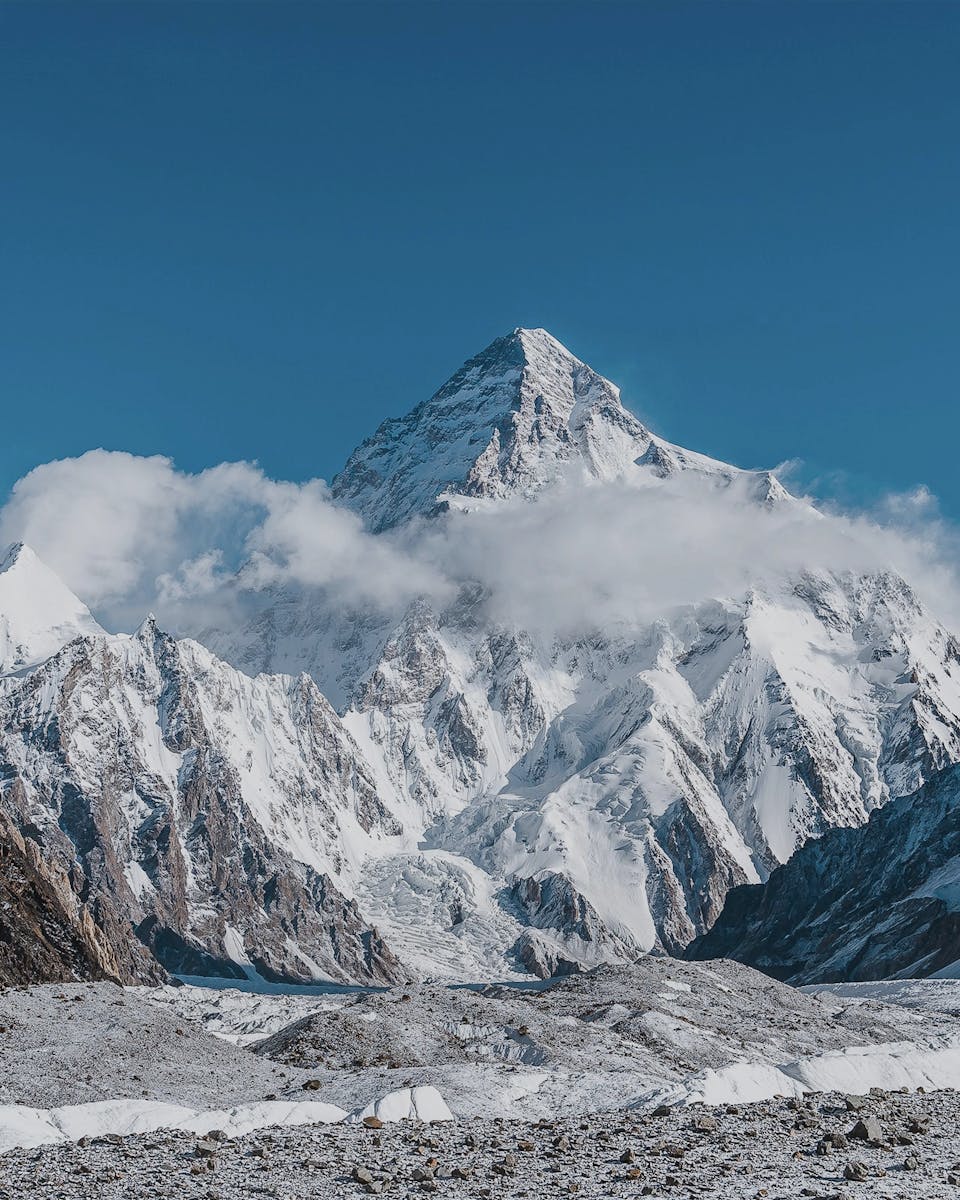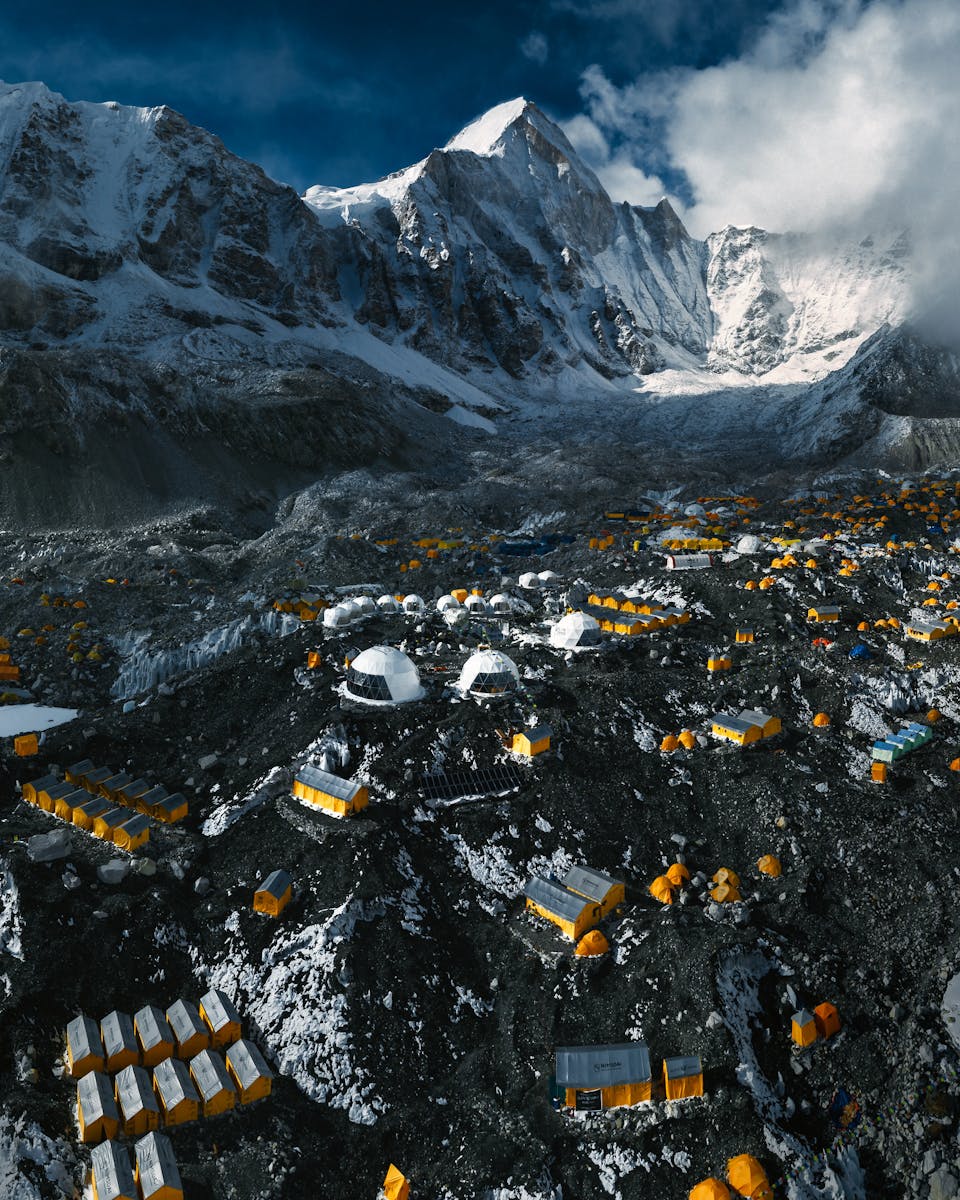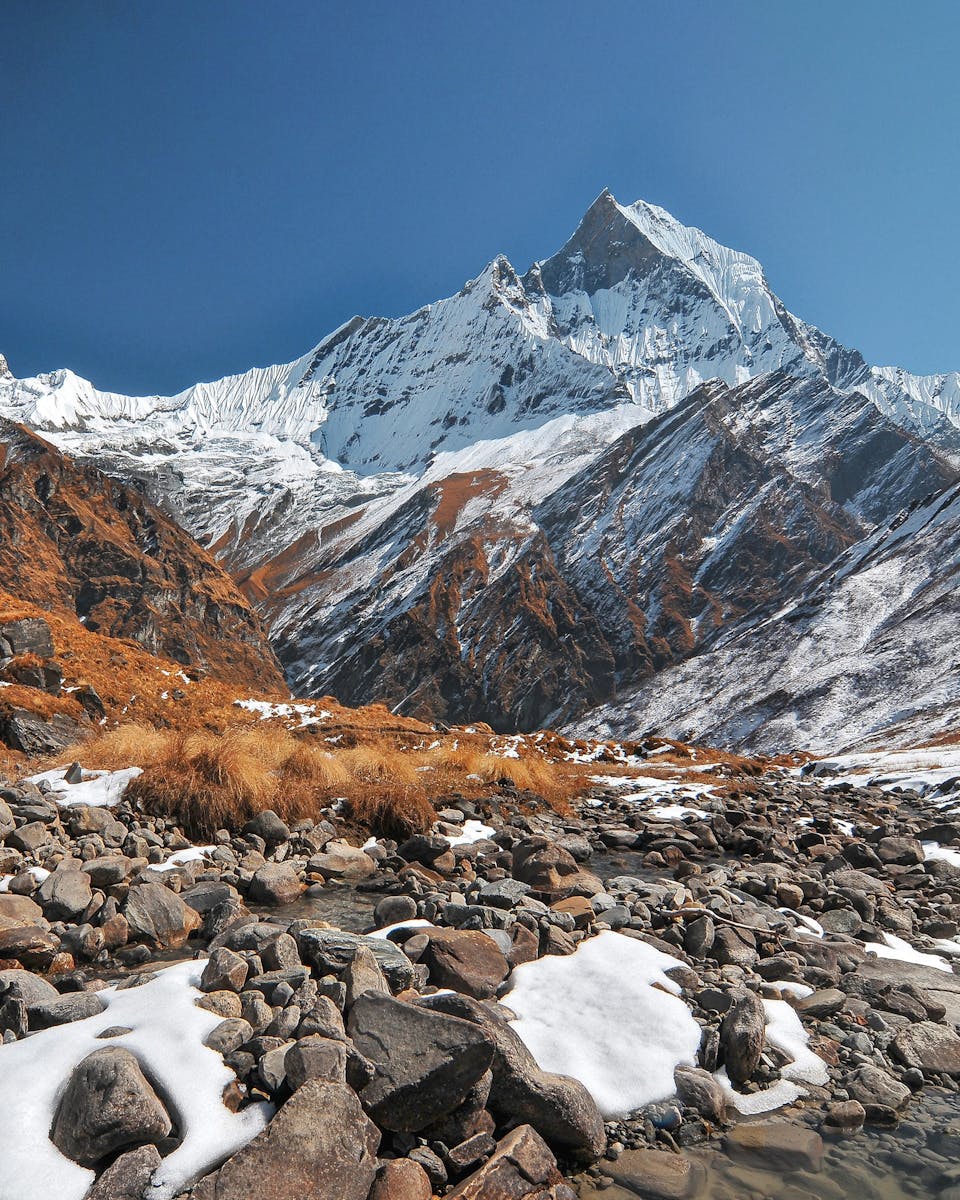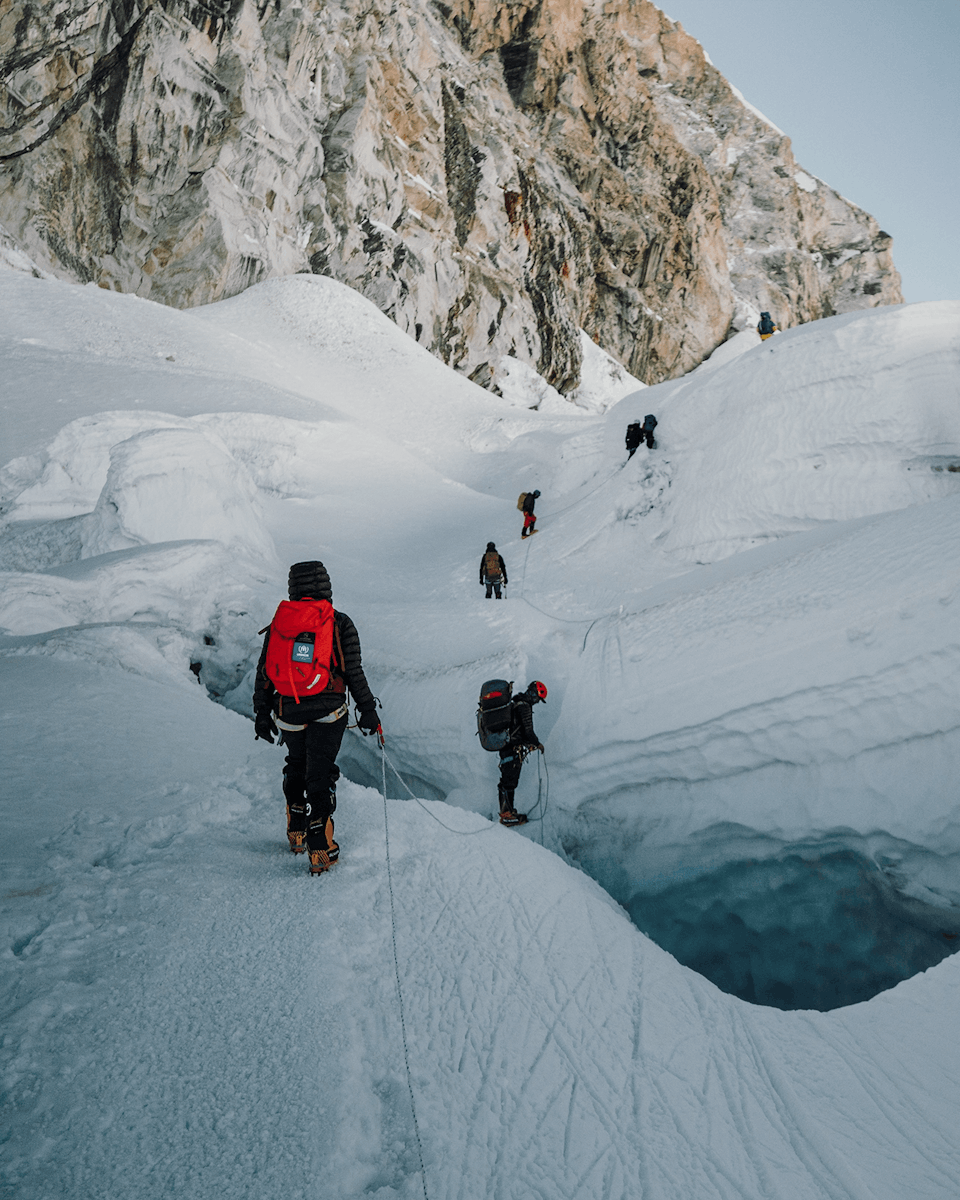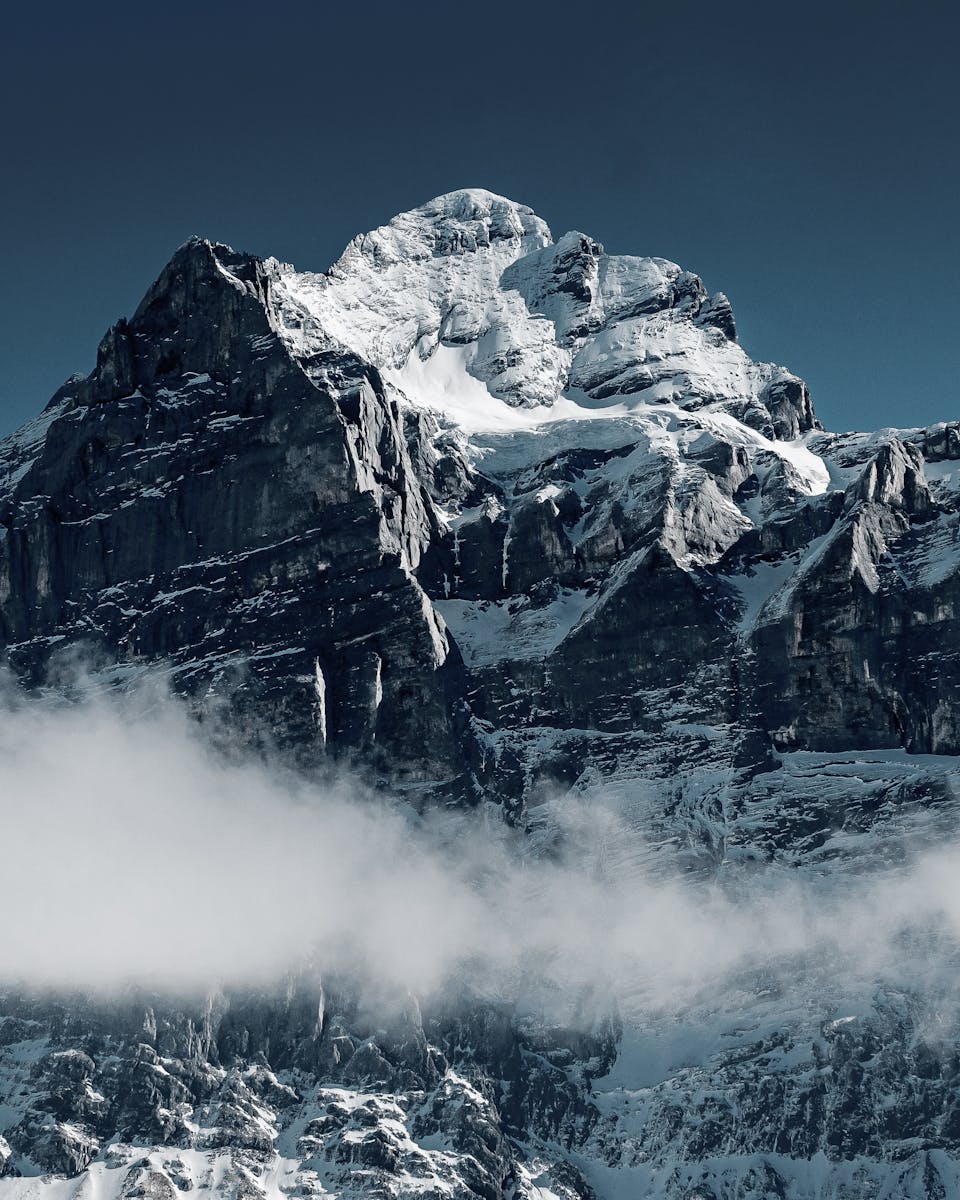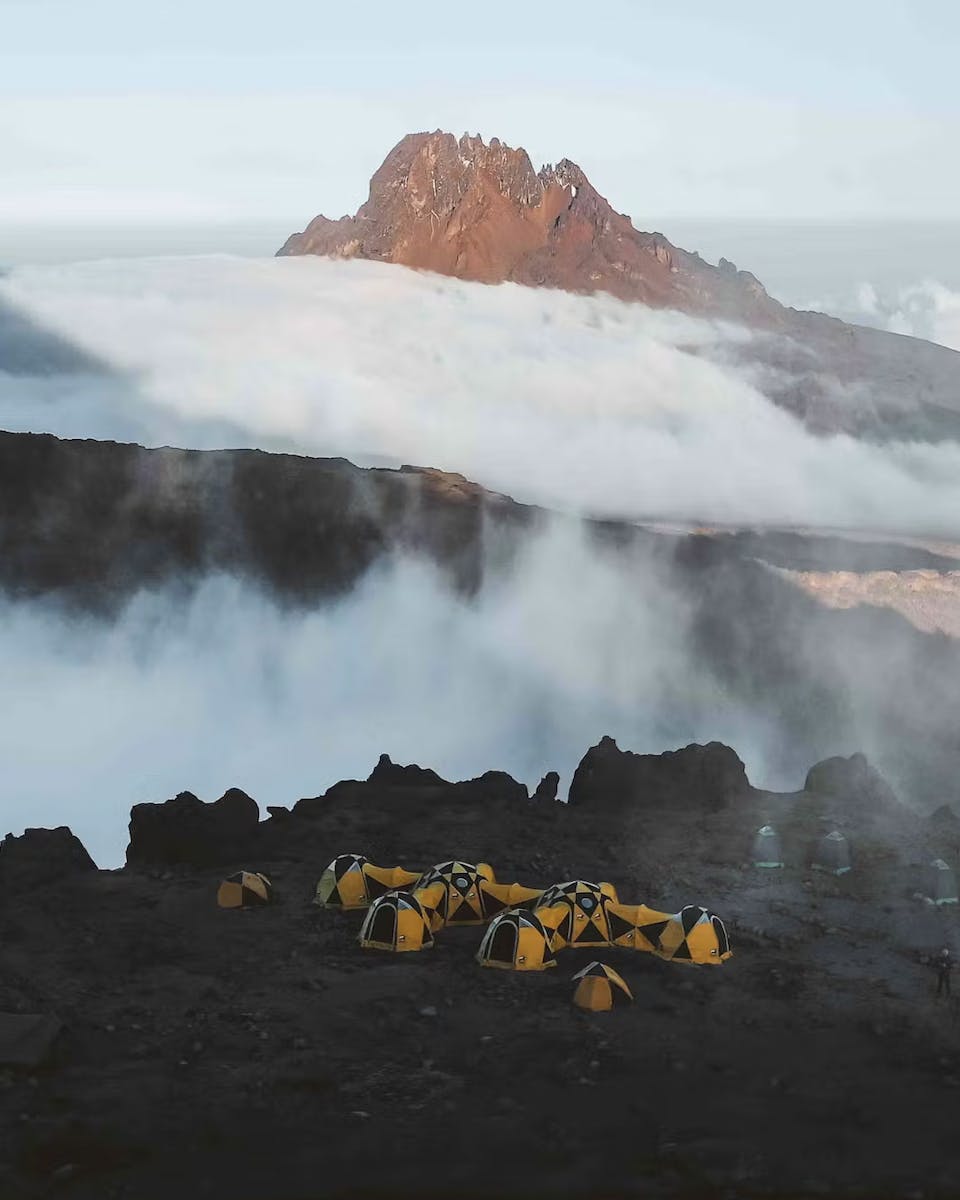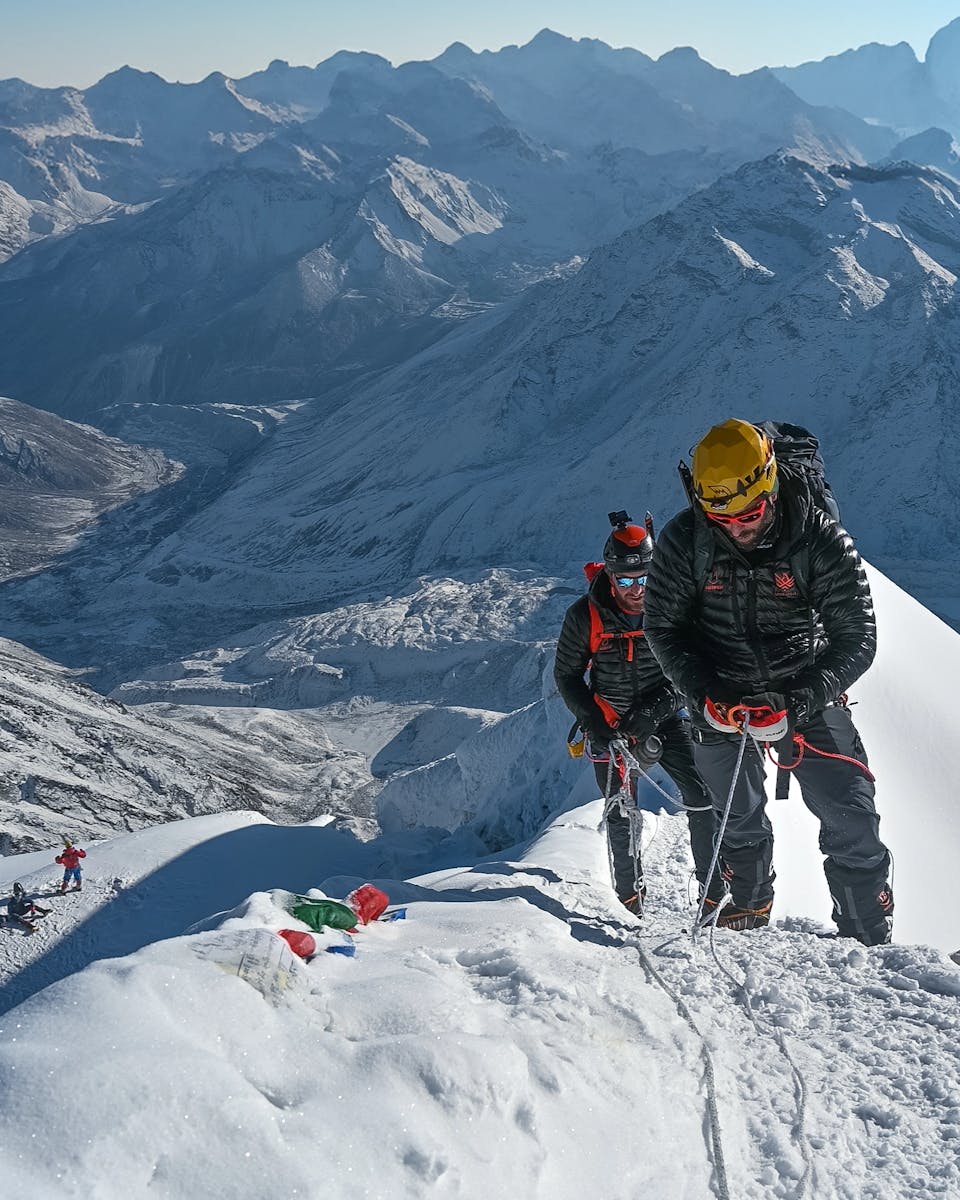There are 14 peaks on the planet over 8,000m. From being the first people to scale K2 in winter, to summiting all 14 in record time, no-one knows them like we do. When working together, our leaders have an industry-leading percentage of summit records. Perhaps more importantly, they have a highest percentage of safety record too.
8000ers
The top of the world, the pinnacle of mountaineering achievement.
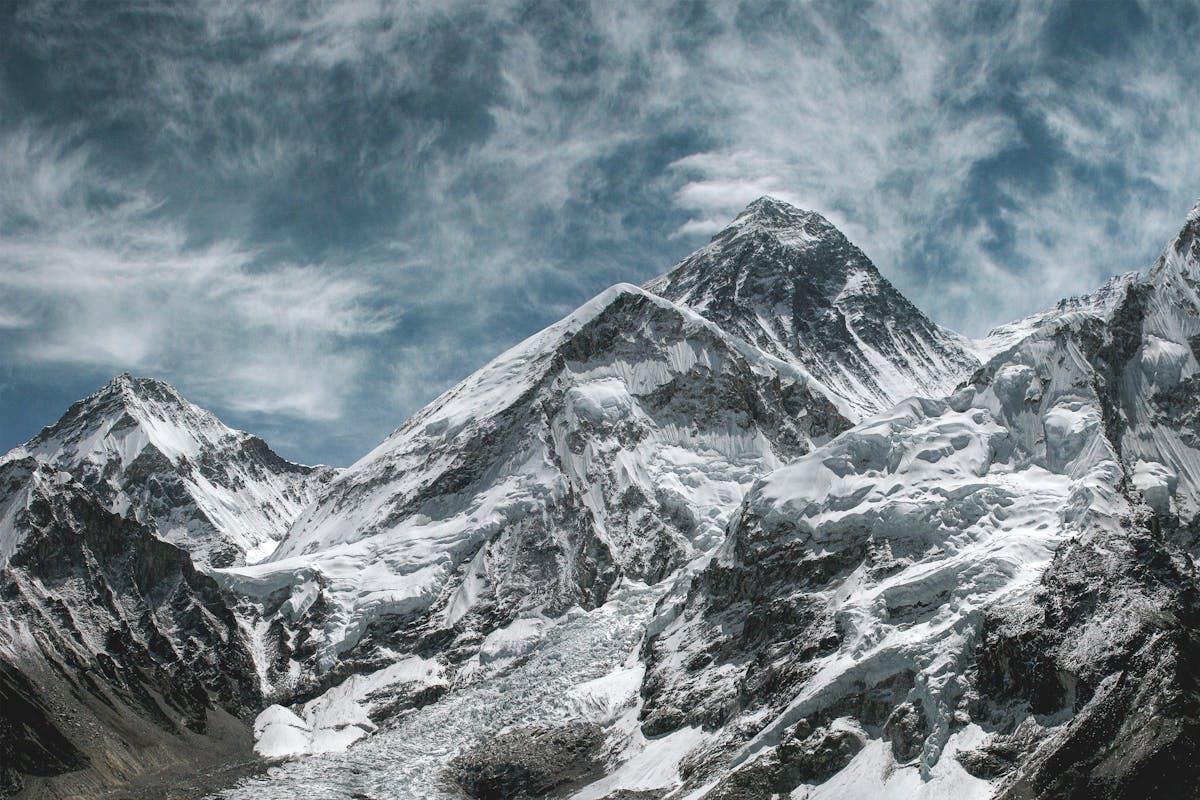
Mount Everest, known to locals as Sagarmatha, is undoubtedly on the bucket list of every adventurer. Who wouldn't want to conquer the highest mountain on the planet?
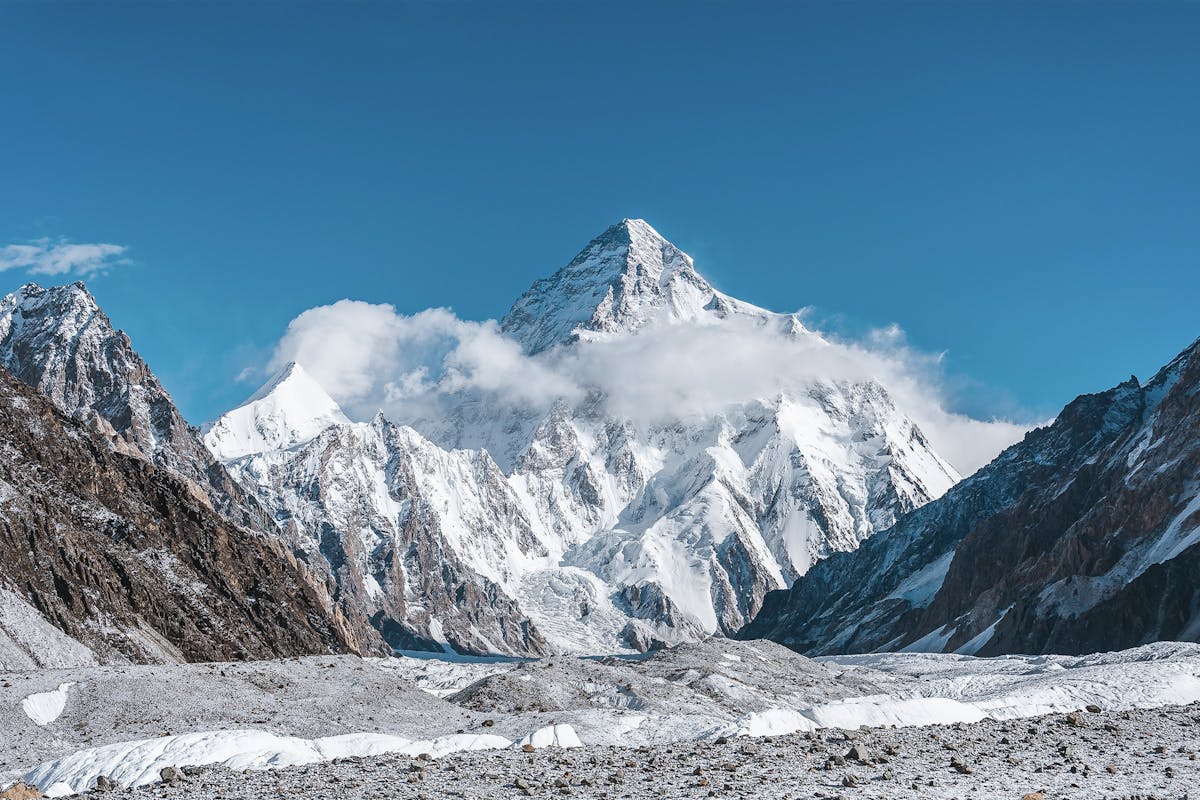
K2 isn’t nicknamed “the savage mountain” for nothing. The world’s second-highest peak is arguably the toughest challenge in mountaineering. For a long time, it was considered unconquerable and the number of successful expeditions was very low.
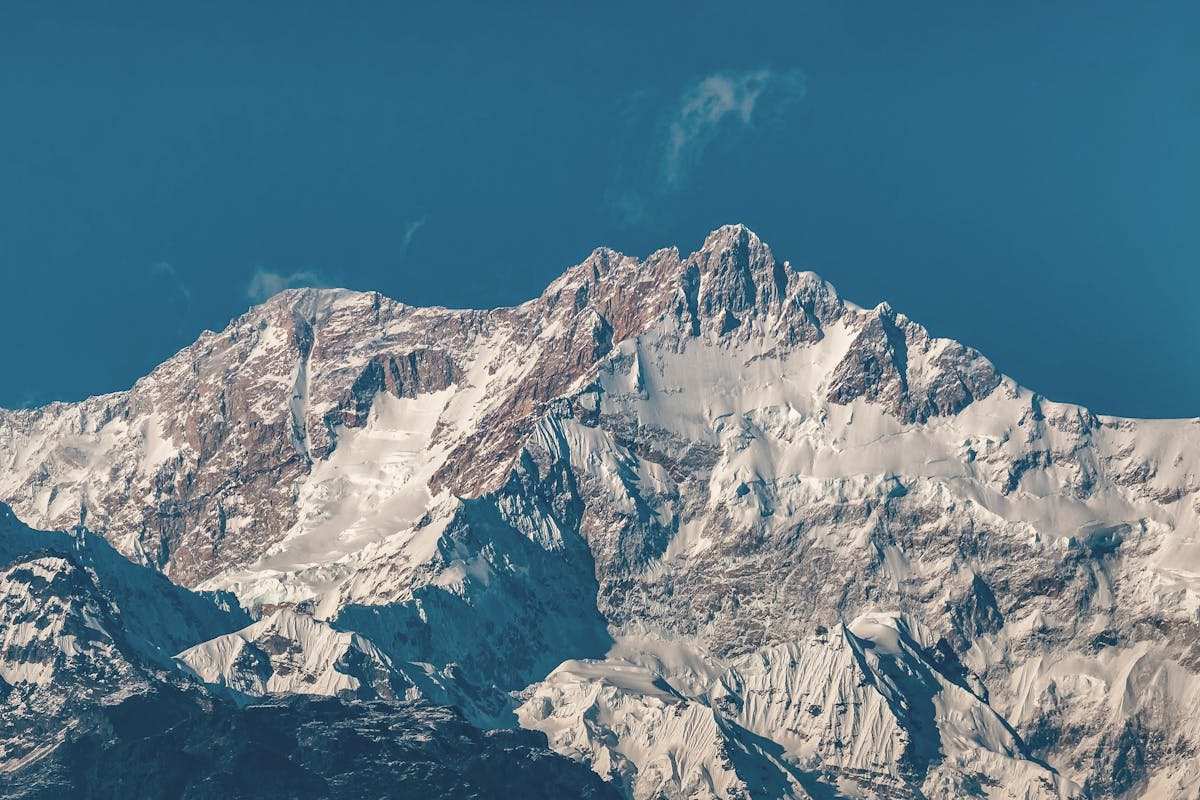
Towering 8,586m above sea-level, Kanchenjunga is more than just the world’s third-highest mountain. Its five peaks are shrouded in myth, considered so sacred that the first men to climb it, a British party from 1955, stopped short of the actual summit in deference to the deities of the mountain. Today, it represents one of the toughest of all the 8000ers and a must for any serious mountaineer’s bucket list.
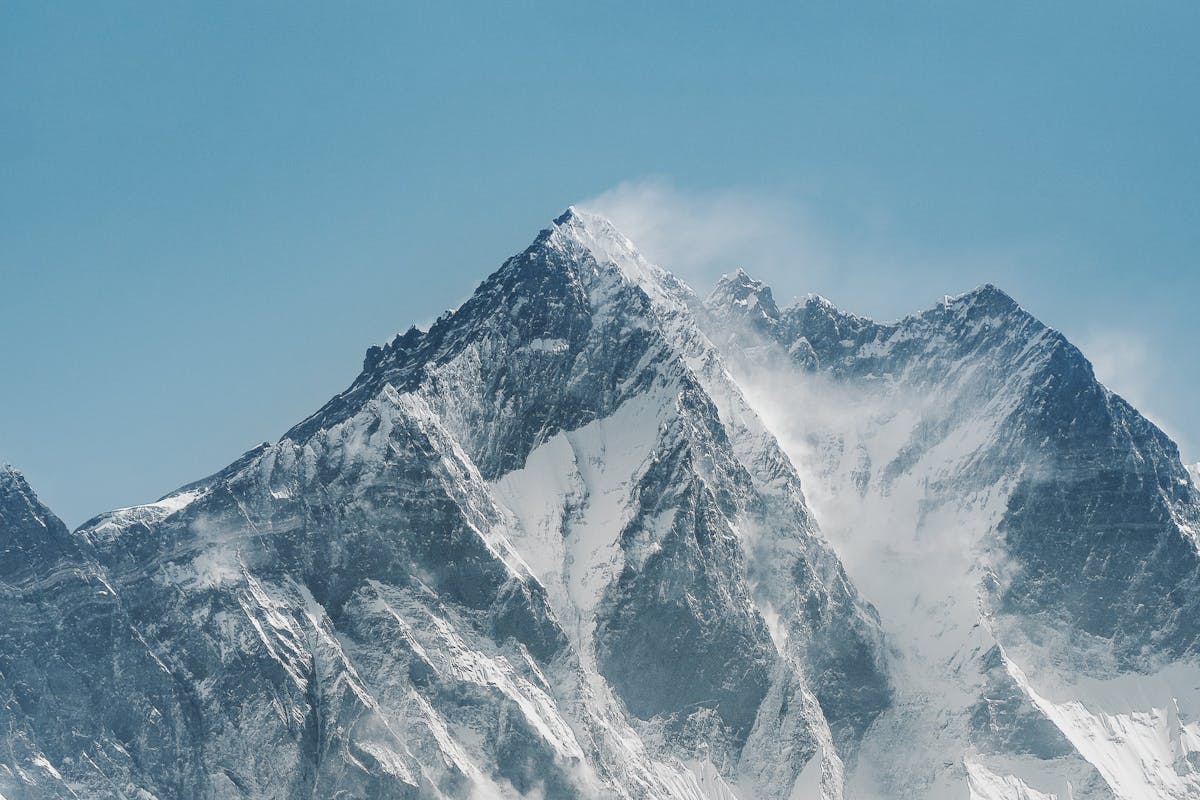
Those outside the mountaineering world often overlook Lhotse, such is the fame of its nearest neighbour. But the world’s fourth-highest mountain has become increasingly popular with climbers looking for a less-crowded - and arguably more challenging - alternative to Everest. With its distinctive, dramatic south face rising a near-vertical 3,200m from the glacier below, this 8,516m peak presents significant challenges for serious mountaineers.

Makalu, the world’s fifth-highest mountain, is one of its most aesthetically pleasing - a near-perfect pyramid of rock and ice thrusting 8,485m into the sky over the Nepalese - Tibetan border. First climbed by a French expedition in 1955, it’s long been regarded as one of the more difficult of the 8,000m peaks - and a huge achievement for mountaineers who make it.
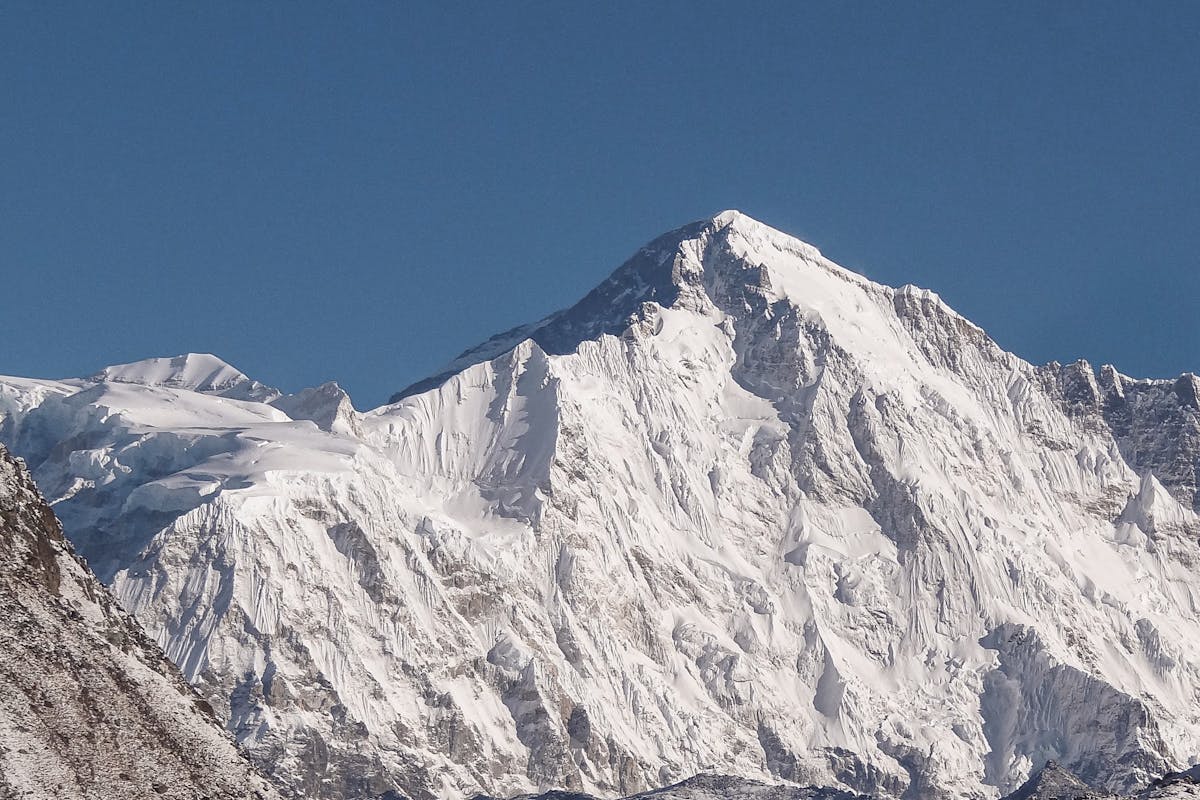
Cho Oyu, which translates as “Turquoise Goddess” in Tibetan, straddles the border between Nepal and Tibet at the Western edge of the mountainous Khumbu region, around 20km from Everest. Widely regarded as the easiest of the 8,000m peaks, Cho Oyu is often seen as a stepping stone to further conquests. But this goddess still demands to be treated with respect.
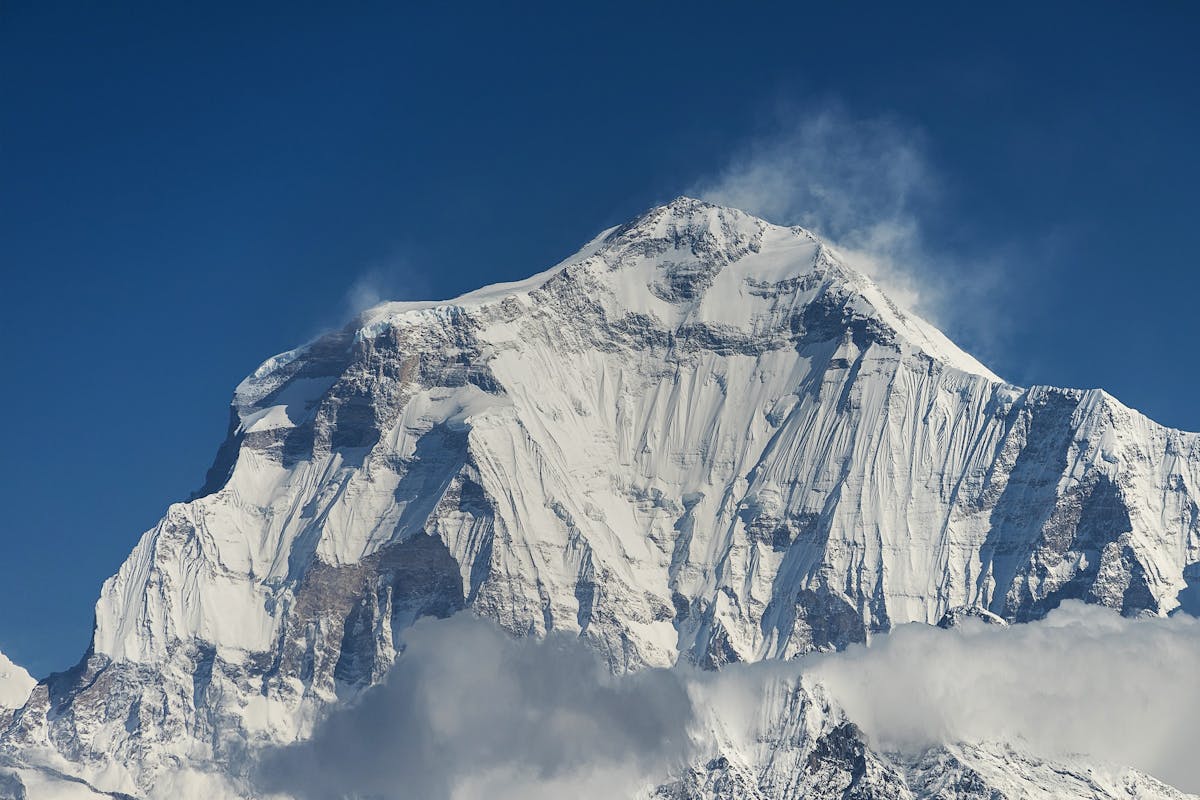
Usually translated as “the Great White Mountain”, the name Dhaulagiri can also mean the “dazzling,” “white” or “beautiful mountain” in the original Sanskrit. The world’s seventh highest peak, the only one of the 8,000ers that’s usually visible from the plains of northern India, clearly made an impression on the people who named it, and continues to dazzle climbers to this day. Rarely summited, it’s one of the most interesting 8,000m peaks, offering multiple potential routes to the skilled and dedicated mountaineer.
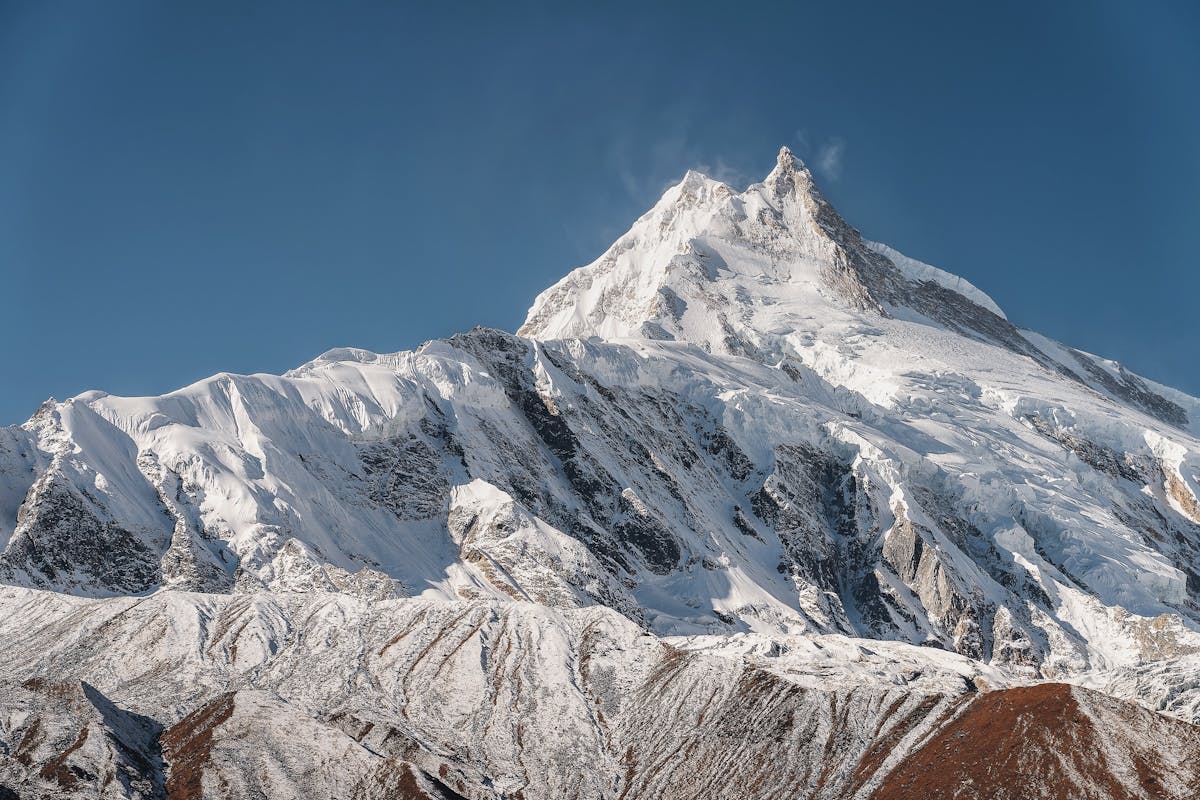
Characterized by its sharp, picturesque peak, Manaslu dominates the Mansiri-Himal subrange of the Himalayas. First summited by a Japanese team in 1956, the world’s eighth-highest mountain has a long association with Japanese climbers, but among Europeans remains one of the less well-known peaks. Reaching the summit at 8,163m is a serious undertaking, but one that Elite Exped is ideally equipped to help you achieve.
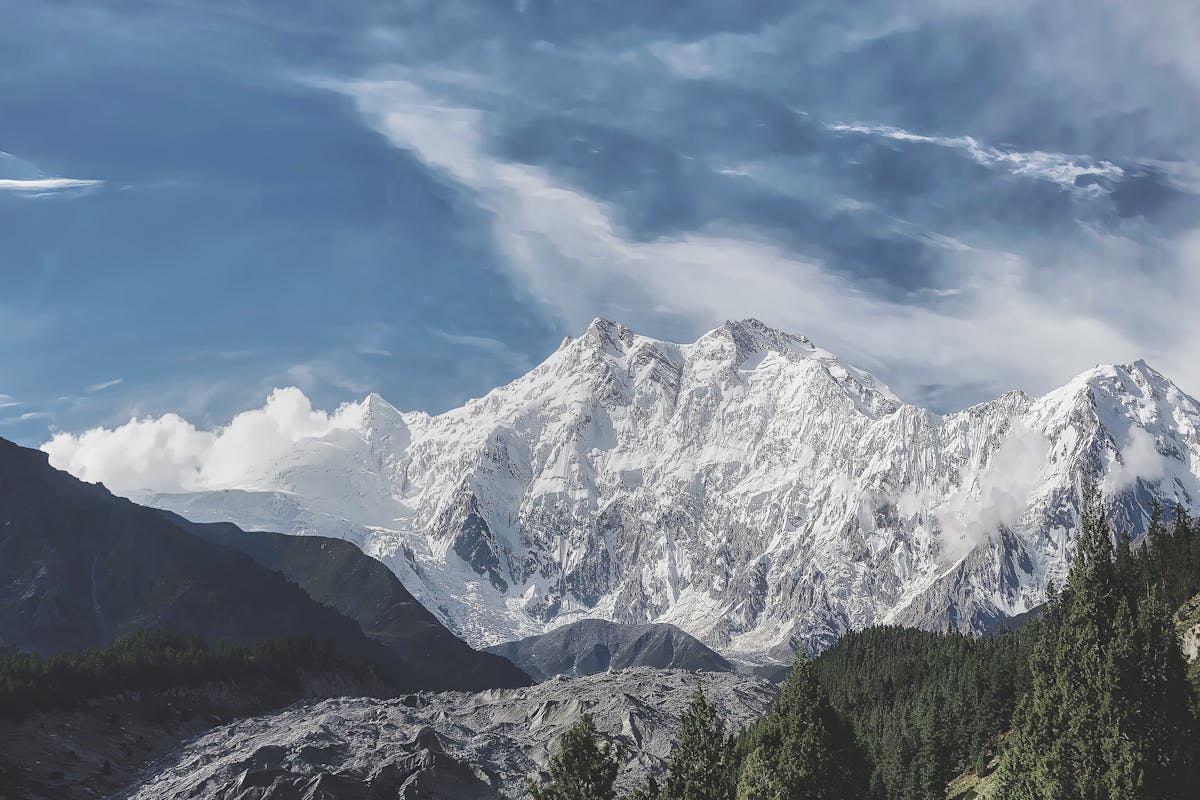
Nanga Parbat presents a foreboding challenge facing anyone attempting to climb all 14 of the 8,000ers. Its Urdu name translates as “the naked mountain,” so-called because snow doesn’t cling to its steep sides, and locals in Pakistan’s Diamer district call it Deo Mir, meaning “huge mountain”. But the nickname it’s earned in Western mountaineering circles, “the killer mountain,” is the most ominous of all. Nowhere is expert guidance, or proper preparation more key. Which is where we come in.
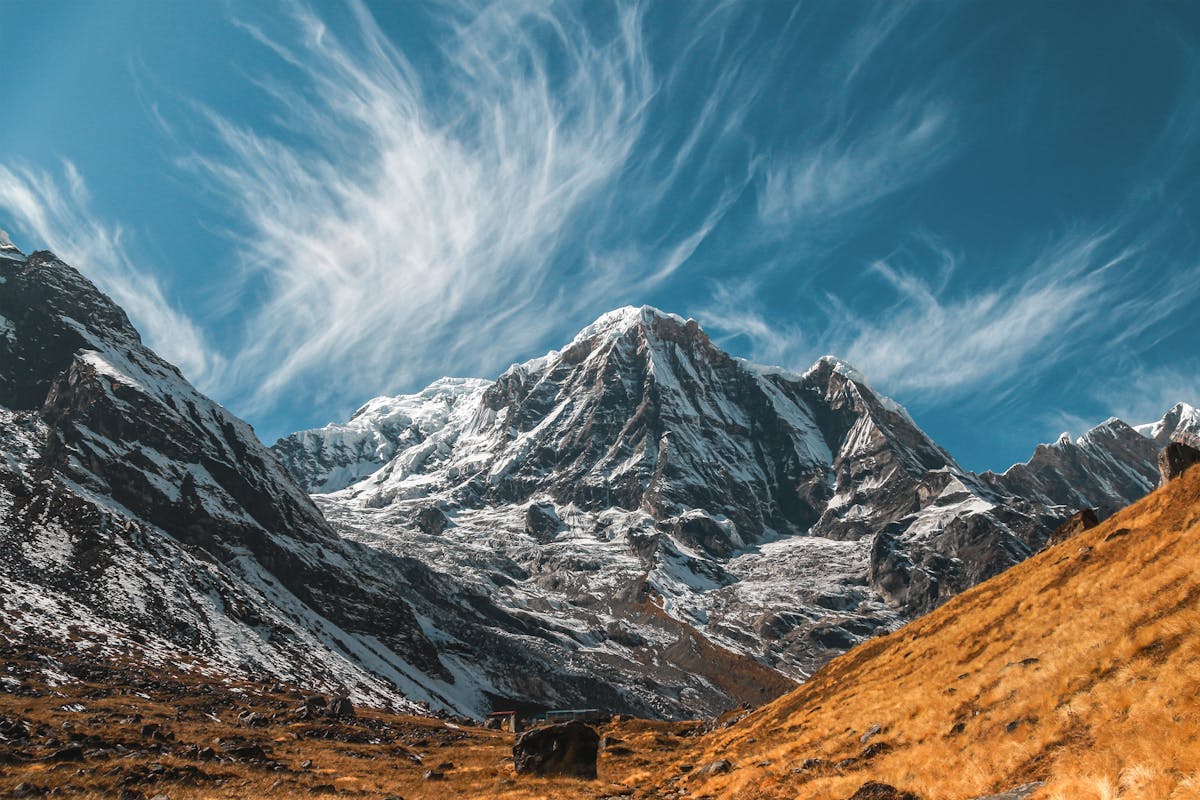
Named for the Hindu Goddess of food and nourishment, who is said to live among its summits, Annapurna is a vast massif in central Nepal with 13 peaks over 7,000m, and one that sits at 8,091m, making it the world’s 10th highest mountain. Annapurna was the first of the 8,000ers to be climbed, and the passes around the massif make it a popular trekking destination. But this is no easy mountain - the steep, south face is technical, tricky, and frequently deadly. A place where being guided by the best of the best makes a real difference.

Originally named K5 by the Colonial Great Trigonometric Survey of India, Gasherbrum I was dubbed ‘the Hidden Peak’ by Victorian mountaineers because of its extreme remoteness. The name however, still seems appropriate to this day. Gasherbrum I, the highest promontory of the Gasherbrum Massif, is still one of the least-known of the 8,000ers, and is rarely climbed to this day. Even on the established routes, there’s a feeling that you’re breaking new ground here - making a first-class guiding team more essential than ever.
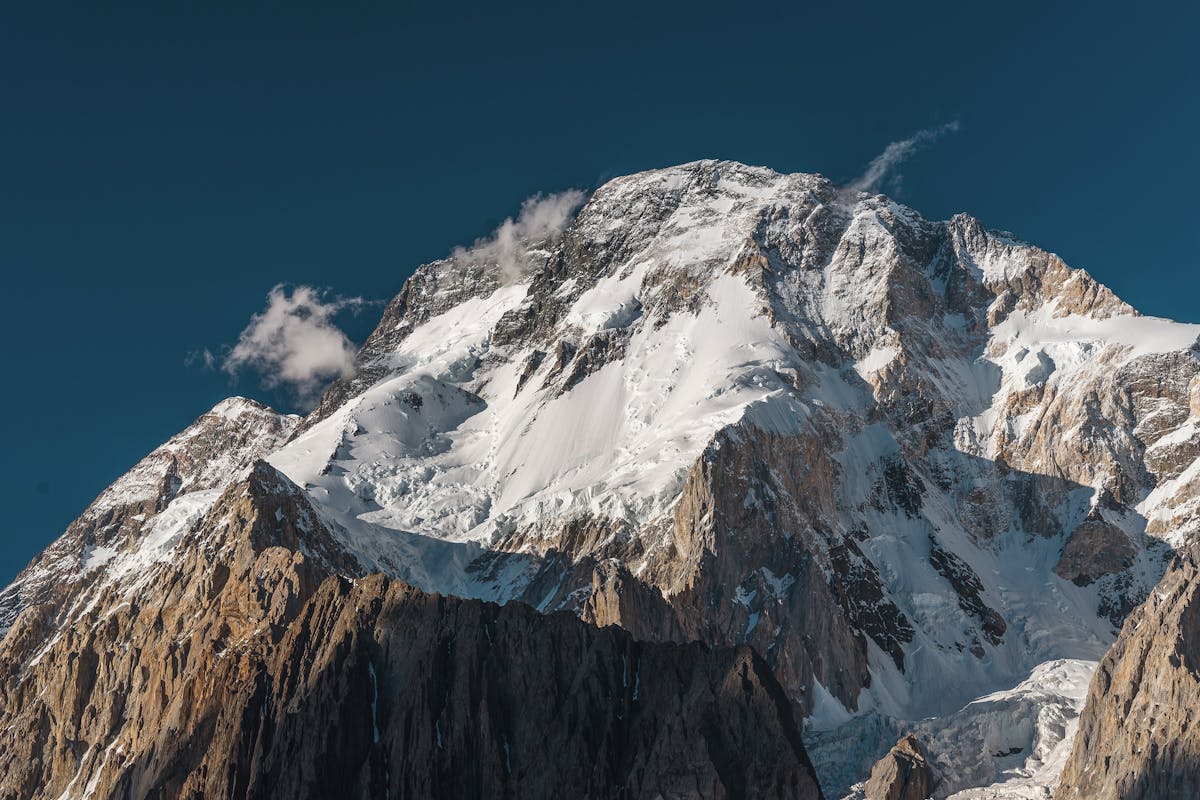
Broad Peak, across the Baltoro Glaciers of north-eastern Pakistan to K2, is named for both its most prominent feature - a 2km wide summit ridge - and its similarity to Switzerland’s Breithorn (which means ‘broad horn’ in German). This defining characteristic is one of the features that makes this a relatively easy climb when compared to the other 8,000ers. For this reason, it’s often used as a wide stepping stone to further adventures, including its near neighbour, K2.
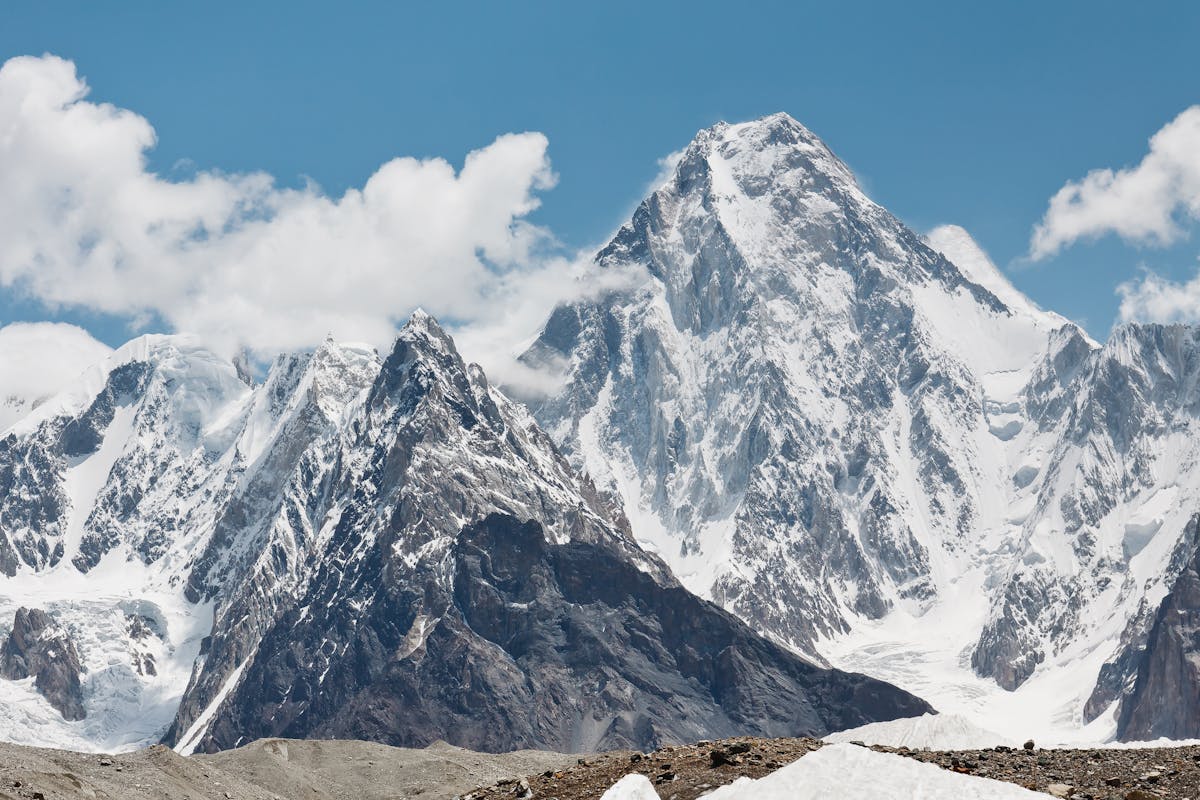
At 8,034m above sea-level, the second highest peak of the Gasherbrum massif is the world’s 13th highest mountain. Generally reckoned to be one of the easiest of the 8,000ers - alongside Broad Peak, Cho Oyu and Shishapangma - it’s often the first that many people climb, serving as an introduction to Everest, or K2. More experienced alpinists looking for a serious challenge may want to consider tackling this as a double-header, with Gasherbrum 1.
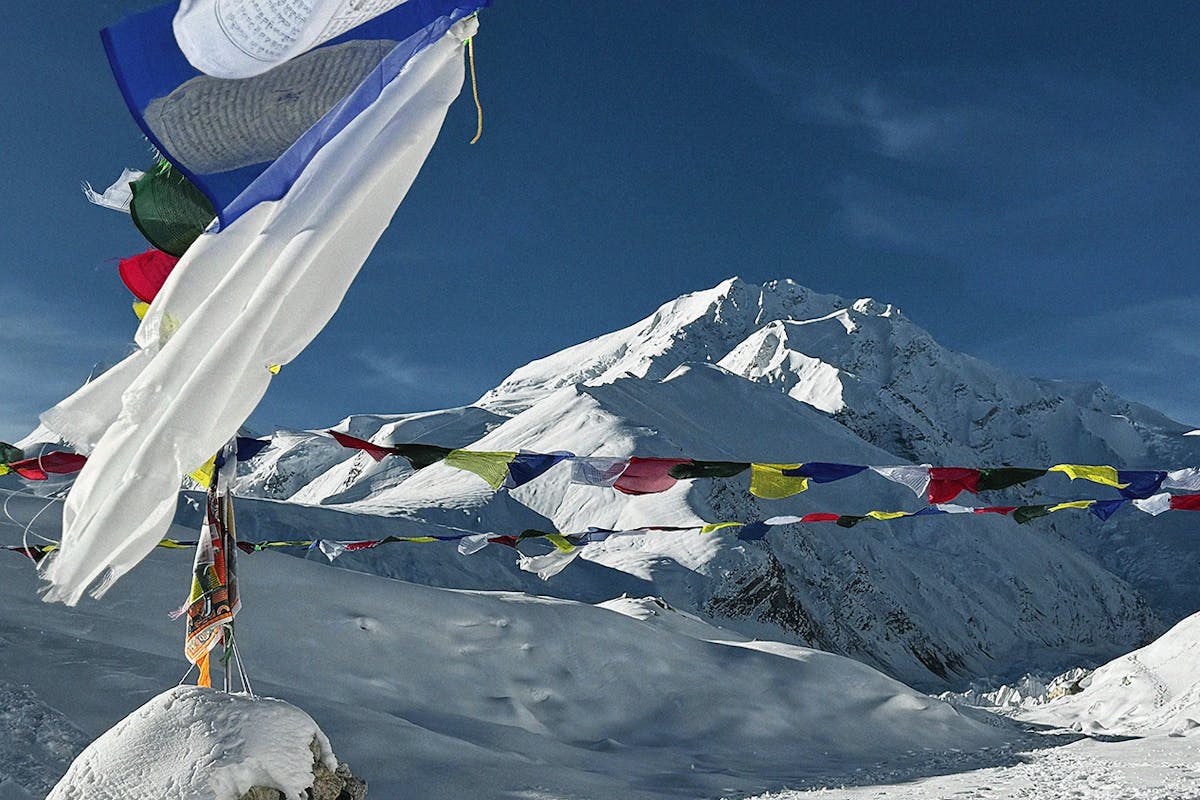
Shishapangma was, for a long time, one of the least accessible of the 8,000ers, giving it a certain air of mystery. As the only one of the 14 that’s entirely in Tibet, it was off limits to Western climbers for many years, but it has opened up more recently. Still, there’s something special about ‘the God of the Grasslands’, as the mountain is called in Tibetan. It might be the lowest of the 14 and the last to be climbed, but it’s by no means the least significant challenge.
follow @eliteexped



